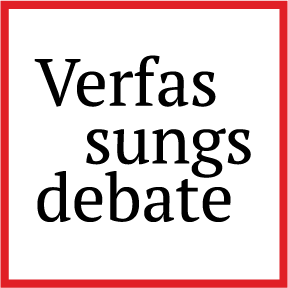The Liberal Litigation Trap
Reckoning with the Conservative Supreme Court
The progressive legal movement faces a harsh reality: its reliance on federal courts has become a strategic liability in an era of conservative judicial dominance. Rather than continue on its current path or abandon impact litigation entirely, liberal cause lawyers should embrace “resistance through restraint” – tactically starving conservative appellate courts of cases while redirecting their energy toward democratic organizing, state-level advocacy, and defensive litigation.
Trump’s triumphant Supreme Court term
Donald Trump’s nascent second administration has been defined by an avalanche of illegality. Over the past five months of its latest term, the Supreme Court assented to it. Through the shadow docket (the so-called “emergency” applications that comprise a growing share of the Court’s workload), its Republican appointees endorsed a wave of dubious executive orders: fast-tracking deportations, banning transgender servicemembers, and slashing the administrative state. In Trump v. CASA, a case involving a patently unconstitutional decree purporting to end birthright citizenship, they curbed the ability of district court judges to issue nationwide injunctions. In merits cases (those fully briefed and argued according to standard procedures), the conservatives threw the Court’s institutional weight behind Trump’s socially conservative agenda, most notably in decisions involving transgender youth in United States v. Skrmetti and pluralistic curricula in public schools depicting LGBT people in Mahmoud v. Taylor.
To paraphrase Yeats, things fell apart, and the Court did not hold.
This development is, of course, unsurprising. Three of the Court’s justices – Barrett, Gorsuch, and Kavanaugh – are Trump’s own appointees, and two others – Alito and Thomas – stand even further to their right. Expecting the Court that just last year maneuvered to secure his electoral victory and shielded him from prosecution to constrain him was never realistic. Still, the term is a bracing reminder that the Court will not save us.
Resistance through restraint
Liberals face limited legal options in a forbidding legal architecture. Yet, as I argue in a forthcoming Cornell Law Review article, one mechanism of resistance to the Court comes in strategic forbearance. Capitalizing on the Court’s inability to initiate cases, liberals can deny the Court vehicles for its sweeping conservative agenda, thereby blunting its imposition. Doing so will not eliminate all constitutional damage; this term, it would have had little impact on most of the Court’s adjudications that originated in emergency petitions from the Trump Administration. But it can reduce harm in parts of its docket.
“Resistance through restraint” will require a practical shift in litigation tactics and a theoretical shift in constitutional understanding. Practically, it calls for redirecting liberal energy, talent, and time from high-profile litigation before hostile judges to persuasion and organizing in other arenas of constitutional and democratic politics. The Court and the Administration have weakened these alternative fora through, respectively, its decades-long crusade against campaign finance regulations and voting rights protections and its months-long repression of free speech, the rule of law, expert knowledge, and press freedom. But they have not extinguished them. With greater difficulty, Americans can still vote, petition their governments; organize communities and build coalitions predicated on competing constitutional visions; dialogue through media and civic and civil society; lobby lawmakers; litigate in state courts, some of which are liberal; and work within democratic institutions at the state and local levels to advance their constitutional values.
Rather than abandoning litigation, the theory calls for moving some resources away from affirmative litigation and preserving defensive efforts in unavoidable suits instigated by conservative legal movement actors. Liberals lack structural control over federal courts, especially at the appellate and Supreme Court levels, where ideological vetting has become more pronounced. Yet they still retain agency over some judicial domains, namely in the cases they initiate in Federal Court and the appeals they choose to advance to higher tribunals.
Theoretically, “resistance through restraint” rejects a juricentric view of constitutional interpretation that treats judges, especially justices, as the final arbiters of constitutional meaning with an inevitable prerogative to weigh in on legal controversies. This view of constitutional interpretation, while always historically and philosophically suspect, is especially pernicious today. It legitimates the concentration of interpretive authority in contemporary stewards who have proven undeserving of it.
The goal of resistance through restraint is not restructuring the Court but curbing its ambit. As I write, “[t]he strategy does not seek to completely prevent Court review of contentious issues – an impossible goal – but rather to reduce the volume and delay the adjudication of ideologically salient cases that threaten liberal precedents.” The theory reasons from a belief that existing American law, while incomplete, contains substantive wins worth defending, particularly in the legislative achievements of post-New Deal liberalism and judicial achievements of the Warren and early Burger Courts.
Skrmetti’s cautionary tale
Consider this term’s United States v. Skrmetti, where six conservative justices upheld a Tennessee law that prohibits minors from accessing puberty blockers and hormones to treat gender dysphoria. The case came to the Court through liberals, who initiated the case before a federal district court and then petitioned the Court for review after losing before a federal appeals court. The underlying result of Skrmetti was predictable, given the composition of the Court. Yet, like any appeal to the Supreme Court, the scope and substance of the ultimate decision was not. Though women’s rights were not directly at issue, the conservative justices used Skrmetti to undermine hard-won gender equality protections embedded in current precedent and constitutional culture.
The Tennessee law withholds care only when such treatment is “inconsistent with” a minor’s sex, a plain example of a sex-based classification. To argue that this ban does not trigger sex discrimination protections, Chief Justice Roberts’s majority opinion revives Geduldig v. Aiello, a 1974 decision that excluded pregnancy regulations from heightened constitutional scrutiny. For decades, Geduldig had been sidelined – its rigid formalism overtaken by a more expansive understanding of sex discrimination under the Equal Protection Clause. That changed with Dobbs, the Court’s 2022 decision overturning Roe v. Wade, which cited Geduldig passingly but tellingly. Skrmetti builds on this doctrinal regression. By extending Geduldig’s logic beyond pregnancy, the Court resurrects a narrow view of sex classifications long discredited in formal legal doctrine and public constitutional understanding.
The Skrmetti cautionary tale underscores the urgency of shifting away from federal conservative courts to hold onto existing precedent codifying a more egalitarian understanding of the Constitution and federal law. Whether Roberts’ opinion reflects a calculated rollback of women’s rights or the conceptual incoherence of a decision reverse-engineered to uphold Tennessee’s ban, the outcome is the same: Skrmetti inflicts real and lasting damage on the rights of women and transgender people. In unsuccessfully seeking to create new judicial protections for transgender youth, liberal litigators weakened established protections for women.
Trump v. CASA and constitutional vandalism
Another blockbuster ruling of the term, Trump v. CASA, underscores the broader futility of Court-centered resistance. Also along familiar ideological lines displayed in Skrmetti, CASA limits the ability of district courts to issue nationwide injunctions that bind parties beyond those directly involved in a suit – making it more cumbersome for liberal litigators to obtain sweeping relief against Trump.
CASA contains a formalism that operates institutionally and methodologically. Institutionally, the Court reasons as if the Trump Administration were a routine executive actor, ignoring its unprecedented attacks on the Constitution. While hand-wringing over district court judges allegedly overstepping their structural role, the majority opinion plays ostrich with a rogue presidency blatantly overstepping its own. The underlying executive order in the case proclaiming to end part of the Fourteenth Amendment – the flagrant unlawfulness of which the majority opinion declines to address – is the nec plus ultra of this imperious overreach.
This institutional formalism extends to how the Court treats itself. Over the four years of the Biden presidency, Republican district court appointees issued a slew of nationwide injunctions against its most consequential policy initiatives, and the Court’s Republican-appointed justices did nothing to tame them. Yet less than half a year into Trump’s return to the presidency, and at the very moment nationwide injunctions emerged as one of the few functioning constraints on Trump’s depredations, the Court’s Republican-appointed justices decisively restricted them. One need not be a legal realist or a cynic to be unnerved by this timing and its partisanship.
Methodologically, CASA engages in an odd inquiry: “We must therefore ask whether universal injunctions are sufficiently analogous to the relief issued by the High Court of Chancery in England at the time of the adoption of the Constitution and the enactment of the original Judiciary Act.” This demand for rigid historical analogues is par for the course of the current Court. But just as the Court overlooked the fragility of American democracy, here, too, it sidesteps equity’s essential historical function of providing flexible remedies tailored to exceptional circumstances.
More to the point, the Court’s fixation on elusive and subjective history shows how this mode of reasoning is not matched for today’s exceptional circumstances. Wading through murky history from centuries before the Constitution’s adoption, the Court looks away from the constitutional vandalism unfolding before it.
Liberals can imitate the Court’s methodological formalism to craft arguments of their own. They can reinforce its institutional pretense of neutrality by treating it as a normal body worthy of adjudicating ideologically salient cases. But they cannot win on this terrain. Yet a core insight of “resistance through restraint” is that diminished influence in the federal courts does not amount to political or legal powerlessness. The Court may not have the capacity and will to vindicate liberal values and resist authoritarianism, but constitutional politics does not belong to it alone.




This is a fascinating and rich post!